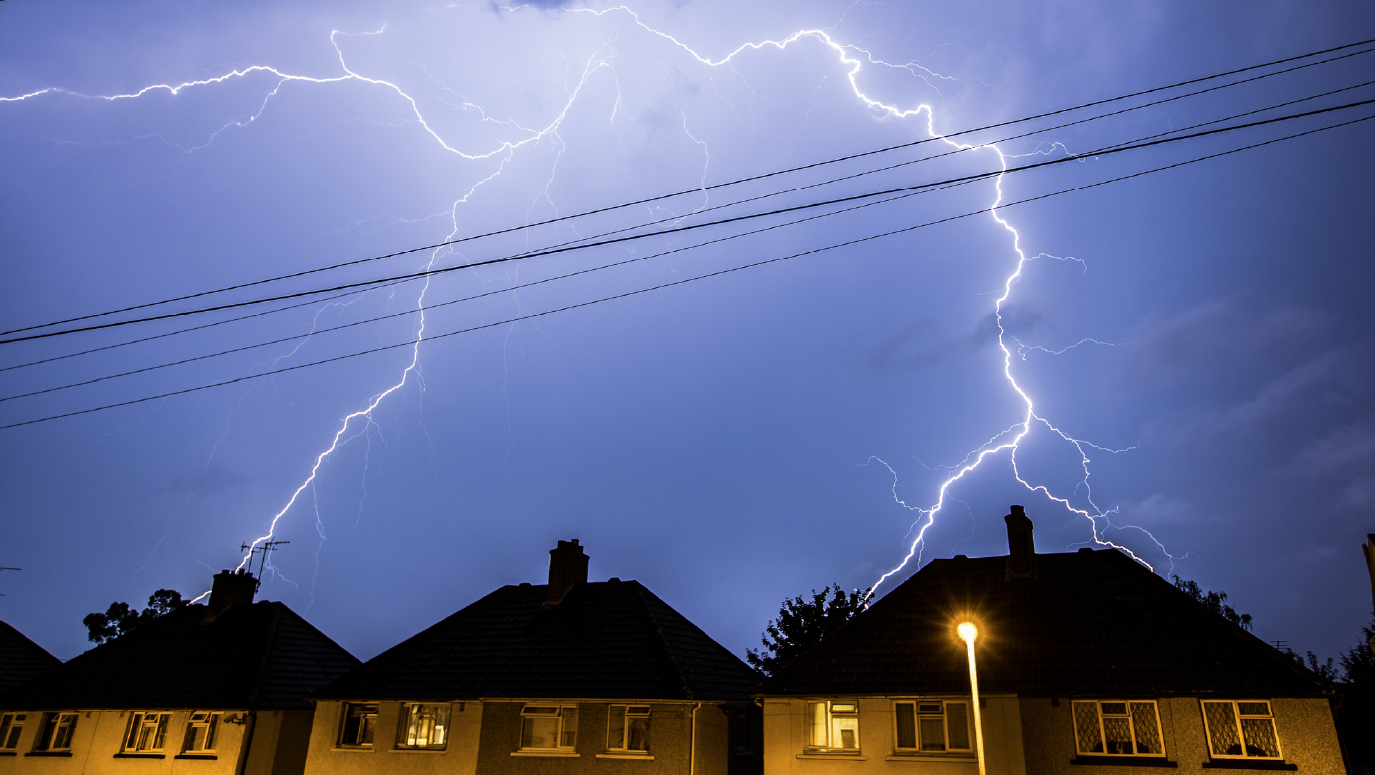Storms and high winds can cause all sorts of problems and damage – and they’re becoming more frequent. According to The Met Office, the 2024 – 2025 storm season saw six named storms, with Storm Éowyn in January 2025 the most powerful storm to hit the UK in over a decade.
Find out how to prepare for stormy weather, what to do in an emergency and how to make a claim if your home is damaged by a storm.
Preparing your home for stormy weather
Here are a few precautions you can take to help protect your home against stormy weather.
- Clean out your gutters at least once a year to prevent rainwater overflowing and getting into plasterwork.
- Check your roof for any loose tiles or damaged chimney pots. To do this safely, inspect the tiles you can see from ground-level or through a window. Never climb on the roof yourself or put yourself at risk of injury. If you notice anything, make sure it's repaired by a professional, and that your TV aerial is properly secured.
- Remove loose or overhanging tree branches from your property to prevent damage in a storm. You may need to speak to your local authority to see if any trees are protected. Also check any gates or fences.
- If a storm is forecast, secure loose objects such as ladders, garden furniture or anything else that could be blown into windows and other objects and break them. Trampolines can be especially dangerous.
- Close and securely fasten doors and windows, and make sure you secure any large doors such as those on garages.
- If you have a car, park it in a garage where possible.
You can also sign up to Emergency Alerts to stay informed about storms and flood risks in your area.
Dealing with damage caused by stormy weather
If your home has been damaged by stormy weather, there are a few things you can do to help keep you and your family safe while also limiting any further damage.
- Be careful not to touch any electrical or telephone cables that have been blown down or are still hanging.
- Don’t walk too close to walls, buildings and trees as they could’ve been weakened. Check for any damage caused to your property, such as loose roof tiles.
- Storm damaged roofs can be temporarily repaired with a plastic sheet or tarpaulin, but don’t put yourself in danger doing so.
- Where ceilings are bulging with water, position buckets beneath the bulge to help minimise damage and collect water if it starts to drip through.
- Leave all your windows, internal doors and cupboard doors open to help dry out your home. Dry out rugs and cushions but don’t lift carpets unless absolutely necessary, as they may shrink. It could take weeks or even months for your home to dry out, so bear this in mind before you re-decorate.
- Take photographs of all parts of your home damaged by storms or floods. It might help with your claim.
- Don’t use your electricity or gas supplies until they’ve been thoroughly checked by a qualified engineer.
Making a claim
It’s worth remembering that storm damage caused to hedges, trees, and fences isn’t typically covered by home insurance.
Home insurers may also refuse to pay out on claims for homes that have been poorly maintained, so it’s important to keep on top of routine jobs like clearing out the gutters.
In the period immediately after a storm, phone lines can be extremely busy as many people try to speak to their insurer. These days, many insurers, including Churchill, allow you to make or start a claim online or in their app. Your claim will still be processed in the same way, and you may find it quicker and easier than trying to get through on the phones.




